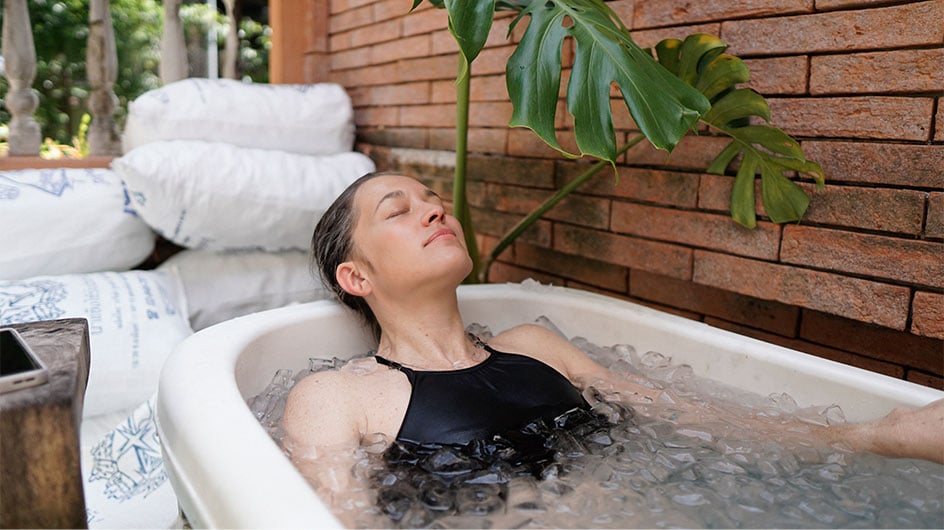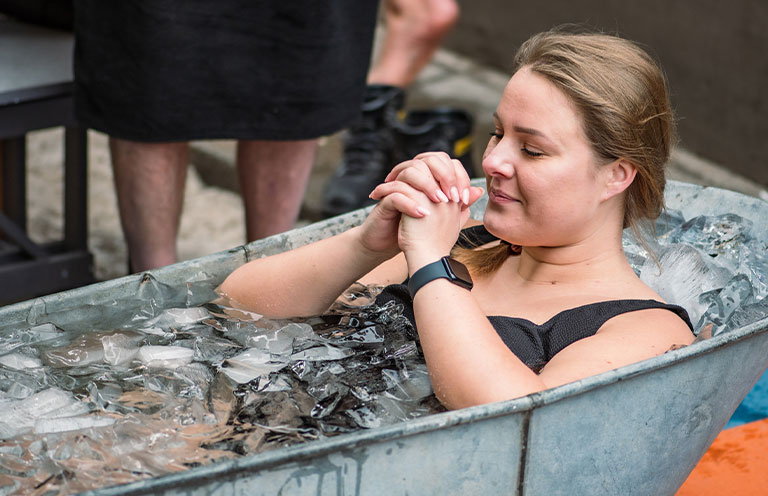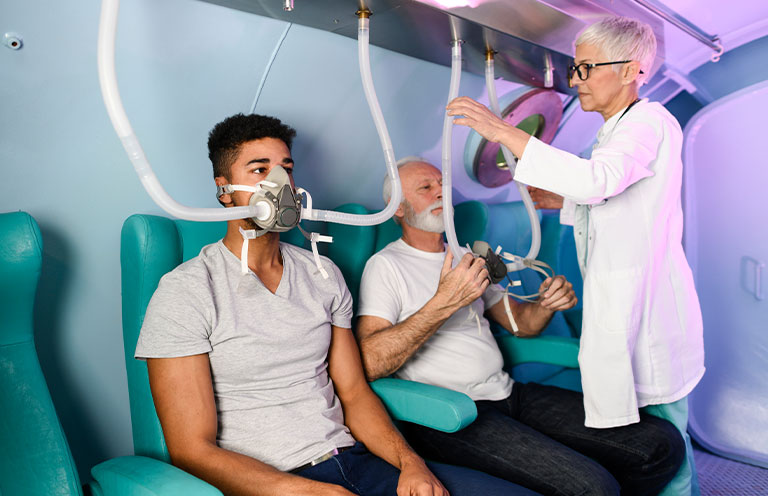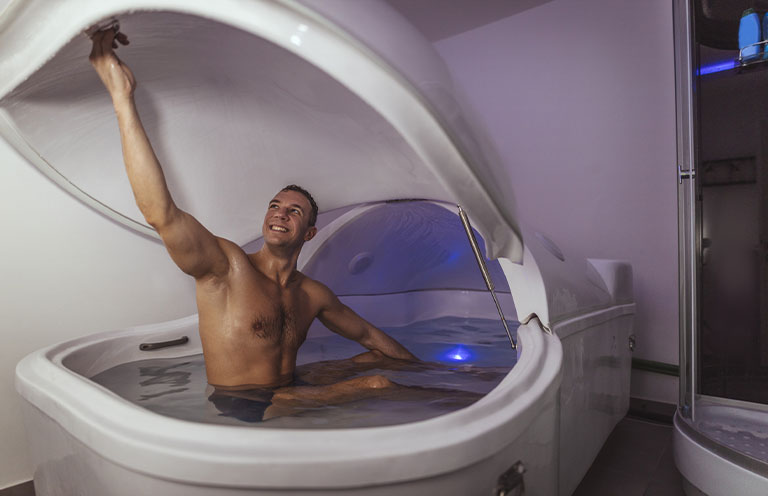Boost Your Wellness Routine: 4 Alternative Therapies You Need to Try
From cold plunges to oxygen chambers, these alternative wellness therapies are gaining popularity for pain relief, recovery, and stress reduction


Alternative therapies are catching on as more people seek holistic approaches to support their overall wellness. From Instagram-famous cold plunges to high-tech oxygen chambers, these treatments are becoming popular complements to conventional medicine.

Cold plunges
Cold therapy, a practice that involves exposing the body to cold temperatures to reduce inflammation and support recovery, has earned its place in mainstream wellness, thanks to a mix of celebrity endorsements and growing scientific support.
"Cold therapy has become a favorite for reducing inflammation and relieving pain,” says Dr. Jessica Sharratt, licensed acupuncturist and co-founder of Heal LA. “Athletes swear by it for recovery, and it's also great for anyone dealing with joint pain or muscle soreness."
Research supports what athletes already know: Cold exposure stimulates the release of norepinephrine, a hormone and neurotransmitter that can improve mood and boost mental clarity, reduce inflammation, and accelerate recovery.
If you can’t access a professional cryotherapy chamber, a 10- to 15-minute ice bath at 50 to 60 degrees Fahrenheit—even a cold shower—can offer similar benefits at home. However, always consult a professional before trying extreme cold exposure, especially if you have cardiovascular conditions.
Cold therapy works well for athletes, fitness enthusiasts, and anyone managing chronic inflammation or pain. Start with 30-second cold showers, and gradually increase the duration as your tolerance builds.

Oxygen therapy
Oxygen therapy can support your body's natural healing processes by allowing you to breathe pure oxygen in a pressurized chamber. Hyperbaric chambers are known to accelerate post-surgical recovery, improve athletic performance, and support neurological conditions.
“It floods your body at a cellular level," says Dr. Sharratt. "This helps promote tissue repair, reduces inflammation, and boosts mitochondrial function."
Can’t make it to a chamber? Dr. Terrence Feehery, DO, at Executive Medicine of Texas offers a simpler option for travelers: "For those that travel to higher altitudes, canned oxygen can boost energy, reduce fatigue, and enhance mental clarity."
Whether through hyperbaric sessions or portable oxygen, this therapy appeals to those interested in anti-aging, wound healing, skin health, muscle recovery, or simply incorporating a gentle, daily wellness ritual into a busy lifestyle.

Float therapy
Float therapy involves lying in warm water saturated with hundreds of pounds of Epsom salt, creating a buoyant environment that makes you feel weightless. These floats take place in sensory- deprivation tanks that block external light, sound, and touch, allowing your nervous system to enter a deeply relaxed state.
The magnesium-rich environment serves dual purposes: It allows for effortless flotation while delivering transdermal magnesium, which helps relax muscles and improve sleep quality.
Sessions typically last 60 to 90 minutes, with many people experiencing significant stress reduction and enhanced creativity that lasts for days. These effects aren’t just anecdotal; clinical studies, EEG readings, and hormone-level measurements all support these benefits.
Float therapy is ideal for those seeking stress relief, enhanced creativity, and deep relaxation without pharmaceutical interventions. First-time users should expect an adjustment period as the brain learns to release control in this unfamiliar environment.

Red light therapy
Red light therapy uses exposure to low-level wavelengths of red light to support healing. Dr. Feehery explains that it’s a simple noninvasive treatment designed to reduce inflammation and promote recovery.
"The light waves act on the mitochondria—the powerhouse within the cells—to reduce inflammation and pain,” says Dr. Feehery. “This therapy also increases nitric oxide, the compound that heals the cells and increases blood flow.”
Unlike UV rays, red light is safe for daily use. Many people report improvements in skin tone, wound healing, and muscle recovery within weeks of consistent treatment. While results can vary and research is still evolving, a growing body of studies supports red and near-infrared light’s positive effects on cellular function, oxidative stress reduction, and tissue repair.
It’s a popular choice for those focused on wound healing, muscle recovery, and seeking gentle wellness practices that fit easily into a daily routine.
"...consult your healthcare provider before starting new wellness therapies"
Picking a therapy
"When it comes to alternative therapies, there's no one-size-fits-all," Dr. Sharratt says. "What works wonders for one person might not be the right fit for someone else."
Curious? Start with easily accessible options, such as contrast showers—alternating between hot and cold water to stimulate circulation, boost energy, and aid muscle recovery—and then explore specialized treatments based on your body's response.
Most importantly, consult your healthcare provider before starting new wellness therapies, especially if you have preexisting health conditions.
